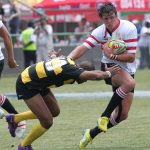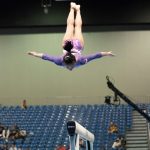Creating an effective strength training program for sprinters is more than just lifting weights. It involves a strategic combination of exercises, nutrition, and mental conditioning. These elements work together to enhance performance and reduce injury risk. Whether you’re a coach, athlete, or fitness enthusiast looking to improve sprint performance, understanding these factors can make a significant difference. This article dives into the critical components that form the foundation of a successful strength training program for sprinters.
Understanding Sprint Mechanics
Sprint mechanics are the bedrock of any training regimen aimed at boosting sprint performance. Without proper mechanics, athletes are likely to expend more energy and increase their risk of injuries. The mechanics involve various aspects such as stride length, stride frequency, and body positioning.
Stride Length and Frequency
Stride length refers to the distance covered in a single step, while stride frequency indicates how quickly an athlete can take successive steps. Both of these factors are crucial for achieving optimal speed. To enhance stride length, athletes should focus on exercises that improve flexibility and strength in the hip flexors, glutes, and hamstrings. On the other hand, stride frequency can be improved through plyometric exercises like box jumps and sprint drills.
Body Positioning
The correct body positioning involves a forward lean, quick arm movements, and proper foot placement. Drills focusing on these aspects can help sprinters maintain balance and generate maximum power during each stride. Incorporating resistance training exercises like deadlifts and squats can improve the core, contributing to better body positioning.
Understanding and improving sprint mechanics should be prioritized before moving on to other aspects of a strength training program. This ensures that the athlete makes the most out of subsequent training phases.
The Role of Periodization
Periodization is a systematic approach to training that involves dividing the training program into specific phases. This method allows for the progressive overload of muscles, optimizing performance while minimizing the risk of injury or burnout.
Macrocycles, Mesocycles, and Microcycles
Periodization usually involves three main cycles: macrocycles, mesocycles, and microcycles. A macrocycle refers to the overall training period, typically spanning several months to a year. Within a macrocycle, there are multiple mesocycles, each lasting from a few weeks to a couple of months. Mesocycles are focused on specific goals such as strength, power, or endurance. Microcycles are the shortest cycle, usually one week long, detailing the day-to-day training activities.
Phases of Training
A well-designed periodized plan for sprinters often includes phases like the general preparatory phase, specific preparatory phase, pre-competition phase, and competition phase. Each phase has distinct objectives. For instance, the general preparatory phase may focus on building a foundation of general fitness, while the specific preparatory phase hones in on sprint-specific strength and power.
Periodization ensures that athletes peak at the right time, usually during the competition phase. It also allows for adequate rest and recovery, which are essential for sustainable performance improvements.
Specific Strength Training Exercises
Strength training exercises tailored for sprinters should focus on developing power, speed, and endurance. Each exercise should aim to enhance the muscle groups most involved in sprinting, such as the quadriceps, hamstrings, glutes, and calves.
Compound Movements
Compound movements are multi-joint exercises that work several muscle groups simultaneously. Examples include squats, deadlifts, and lunges. These exercises are invaluable for sprinters as they mimic the muscle coordination and power output required during a sprint. Squats, for example, activate the quadriceps, hamstrings, and glutes, which are essential for explosive starts and maintaining high speed.
Plyometric Exercises
Plyometric exercises are designed to improve the explosiveness and power of the muscles. They include activities like box jumps, sprint drills, and hurdle hops. Plyometrics train the fast-twitch muscle fibers, which are crucial for sprinting. These exercises not only improve muscle power but also enhance neuromuscular efficiency, enabling faster and more efficient movement patterns.
Core Strengthening
A strong core is vital for maintaining balance and stability during a sprint. Core exercises such as planks, Russian twists, and medicine ball throws can significantly contribute to improved sprint performance. A robust core helps in maintaining the correct body posture and reduces the risk of injuries.
Incorporating a mix of compound movements, plyometric exercises, and core strengthening routines ensures a comprehensive approach to building the strength and power required for sprinting.
The Importance of Recovery
Recovery is a critical yet often overlooked component of a strength training program for sprinters. Proper recovery strategies can enhance performance, reduce the risk of injury, and improve overall well-being.
Rest Days
Rest days should be an integral part of any training program. These days allow the muscles to repair and grow stronger. Overtraining can lead to fatigue, poor performance, and an increased risk of injury. Incorporating at least one or two rest days a week can help maintain a high level of performance over the long term.
Nutrition
Proper nutrition plays a vital role in recovery. Consuming a balanced diet rich in proteins, carbohydrates, and fats provides the essential nutrients needed for muscle repair and energy. Proteins are particularly crucial as they help in muscle recovery and growth. Including foods like lean meats, fish, eggs, and legumes in the diet can aid in quicker recovery.
Sleep
Quality sleep is another essential component of recovery. During sleep, the body undergoes various repair processes, including muscle recovery. Aim for at least 7-8 hours of sleep per night to ensure optimal recovery. Poor sleep can lead to decreased performance, increased fatigue, and a higher risk of injuries.
By prioritizing recovery through rest days, proper nutrition, and quality sleep, athletes can improve their performance and reduce the likelihood of injuries.
Mental Conditioning
Mental conditioning is often the unsung hero in achieving peak performance in sprinting. The psychological state of an athlete can significantly impact their physical performance.
Goal Setting
Setting short-term and long-term goals can provide a roadmap for success. These goals should be specific, measurable, achievable, relevant, and time-bound (SMART). Having clear goals can keep athletes motivated and focused on their training objectives.
Visualization Techniques
Visualization techniques involve mentally rehearsing the sprinting process. Athletes imagine themselves executing their sprints perfectly, from the start to the finish line. This mental practice can enhance muscle memory and improve actual performance. Visualization can also be used to prepare for competitive scenarios, helping athletes manage stress and anxiety.
Mindfulness and Stress Management
Mindfulness practices like meditation and deep-breathing exercises can help athletes stay focused and calm. Stress can negatively impact performance, so learning how to manage it is crucial. Techniques like mindfulness meditation can help athletes stay present and maintain their focus during training and competitions.
Incorporating mental conditioning into a strength training program can provide athletes with the psychological tools they need to excel.
Designing a strength training program for sprinters involves a multifaceted approach. Understanding sprint mechanics, employing periodization, incorporating specific strength training exercises, prioritizing recovery, and focusing on mental conditioning are all critical factors. Each of these elements plays a vital role in enhancing performance and reducing the risk of injuries. By considering these key factors, you can create a comprehensive and effective strength training program tailored to the unique needs of sprinters. Whether you are a coach guiding athletes or an individual seeking to improve your sprint performance, these insights can serve as a valuable resource.











